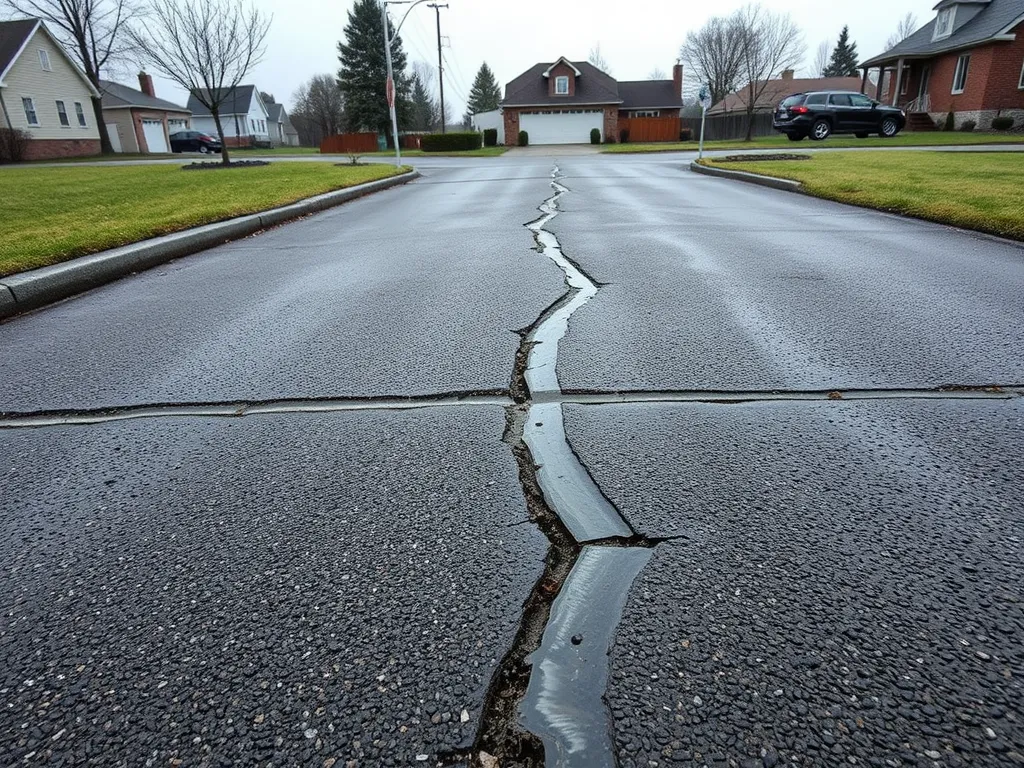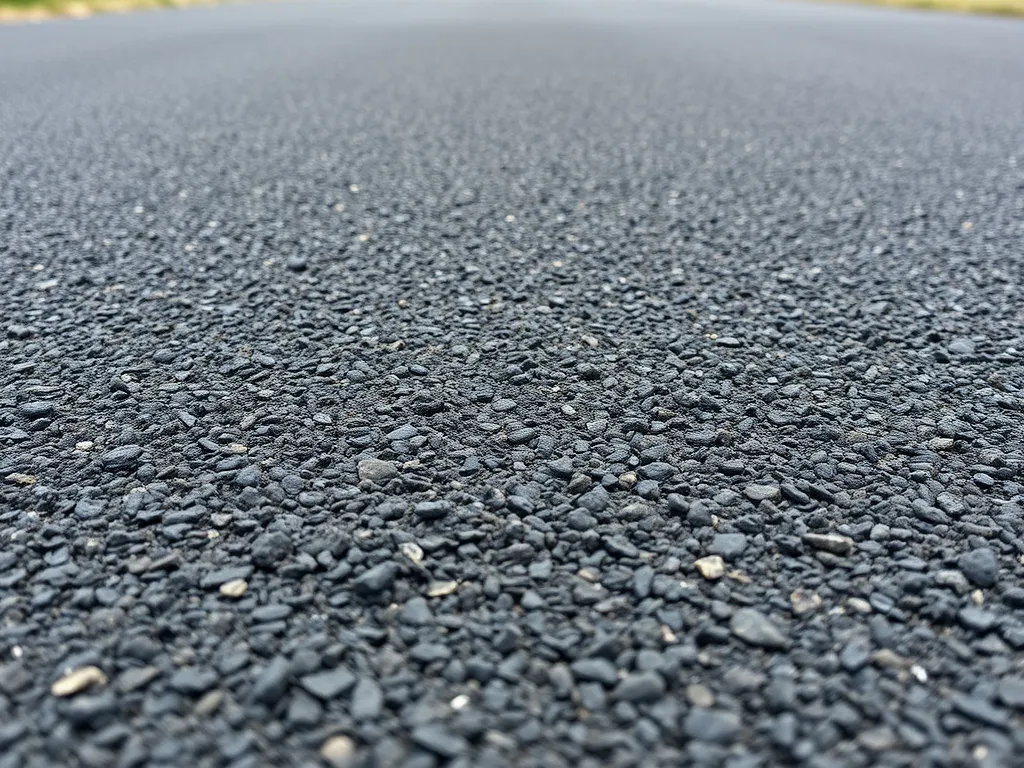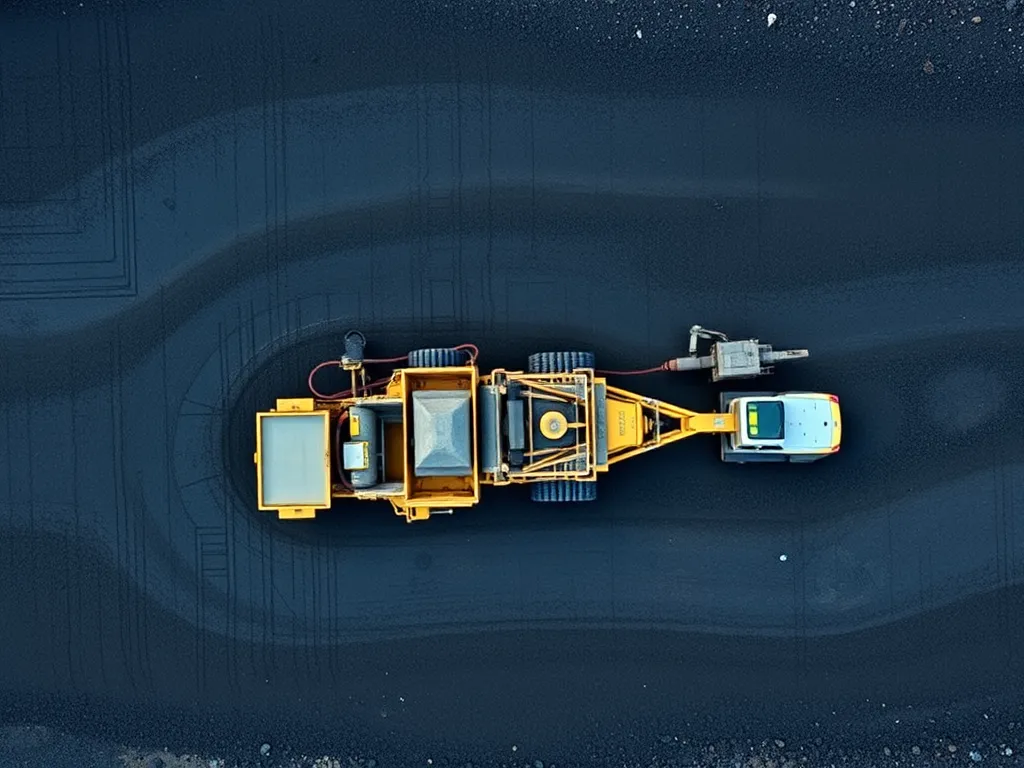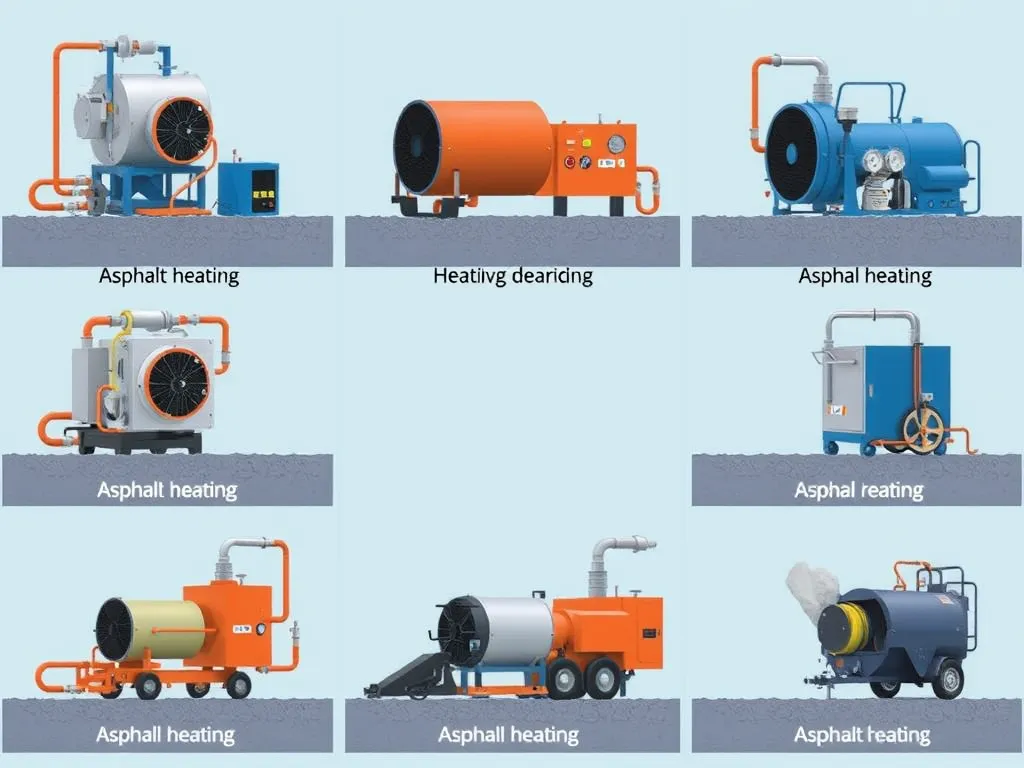The Importance Of Regular Driveway Inspections
Published on: May 2, 2025 | Last Updated: April 14, 2025
Written By: George Voss
Regular driveway inspections are planned evaluations that spot early cracks, drainage flaws, or surface damage in asphalt, concrete, or paver driveways. These checks go beyond quick glances—they measure slope angles, test water runoff speed, and identify weak spots like crumbling edges or sinking sections. Done twice a year (spring and fall), they boost pavement lifespan by 30-50%, avoid $800+ resurfacing jobs, and keep walkways safe. Inspections also reveal hidden issues like base layer erosion or weed growth in joints before they worsen.
This guide details how inspections save money, prevent hazards, and preserve driveway quality. You’ll get step-by-step methods to find potholes, pooling water, or uneven surfaces, plus tips for seasonal care. We’ll compare inspection needs for asphalt vs. concrete, share tools like crack gauges, and outline when to hire a pro. Environmental solutions like permeable patching materials are also included.
Contents
- Understanding Driveway Inspections
- Key Benefits Of Regular Driveway Inspections
- Common Driveway Issues Detected Through Inspections
- Best Practices for Effective Driveway Inspections
- How Often to Perform Driveway Inspections
- Environmental Considerations in Driveway Maintenance
- Frequently Asked Questions
- Closing Thoughts
- Additional Resources for You:
Understanding Driveway Inspections
A driveway check spots issues early. It looks at surface wear, base strength, and water flow. Regular checks keep your drive safe and cut repair costs by up to 50%.
What is a Driveway Inspection?
A pro or homeowner checks your drive for flaws. They look for cracks, potholes, pooling water, and slope shifts. This step finds small problems before they grow. Tools like moisture meters or laser levels may be used for exact checks.
The Driveway Inspection Process
Inspectors follow a set path to cover all risks. Here’s how it works:
- Visual scan: Walk the drive to spot cracks, stains, or dips.
- Drainage test: Pour water to see if it pools or flows off.
- Probe weak zones: Use a screwdriver to test soft asphalt or crumbly concrete.
- Check edges: Look for soil gaps or crumbling sides.
- Measure slope: Ensure a 2% grade so water drains off.
Reports note fixes needed, like seal cracks under 1/4 inch fast to stop spread.
Spotting trouble early saves cash. Next, learn how regular checks boost your drive’s life and curb appeal.
Key Benefits Of Regular Driveway Inspections
Frequent evaluations of your paved surfaces yield measurable benefits. Let’s break down how structured checks protect your investment.
Prolongs Driveway Lifespan
Driveways face daily stress from traffic, weather, and UV exposure. Routine inspections spot early signs of wear like surface oxidation or minor cracks under ¼ inch. Fixing these issues with crack fillers or polymer-modified sealants prevents water infiltration – the #1 cause of base layer failures. Well-maintained asphalt lasts 20-25 years versus 12-15 years with neglect.
Prevents Costly Repairs
Catching problems early slashes repair budgets. Sealing 10 linear feet of cracks costs $15-$50. Left unchecked, those cracks become potholes needing $300-$700 per 100 sq ft for patching. Full driveway replacement runs $4-$8 per sq ft – up to 80% more than preservation work. Inspections also verify proper slope (minimum 2% grade) to avoid $1,200+ drainage overhauls.
| Issue | Early Repair Cost | Delayed Repair Cost |
|---|---|---|
| Hairline Cracks | $0.15-$0.50 per linear ft | $3-$7 per sq ft (resurfacing) |
| Minor Settling | $50-$200 (leveling) | $800+ (base reconstruction) |
Ensures Safety for Vehicles and Pedestrians
Uneven surfaces pose tripping risks with 31% of slip/fall incidents occurring on damaged pavement. For vehicles, potholes under 2 inches deep can bend wheel rims ($200-$500 per repair). Inspections check for edge raveling near tire paths and load-bearing capacity in high-traffic zones.
Maintains Property Aesthetics and Value
Curb appeal directly impacts home valuations. A cracked or faded driveway can reduce perceived property value by 10-15%. Professional inspections identify staining from oil leaks (removable with $20 degreasers) or vegetation growth in joints. Timely power washing ($0.40-$0.60 per sq ft) restores color depth in oxidized surfaces.
Spotting these concerns early sets the stage for deeper analysis. Next, we’ll explore specific pavement flaws uncovered during detailed evaluations.

Common Driveway Issues Detected Through Inspections
Driveway checks spot small problems before they grow. A close look finds flaws that harm your slab’s base or top layer. Fixing these early saves cash and keeps your drive safe.
Cracks and Surface Deterioration
Thin lines in asphalt or concrete spread fast if left. Checks find hairline cracks, alligator splits (web-like breaks), or edge gaps. Sun, ice, and car fluids eat at binders. Unsealed cracks let water seep through – 1 inch of rain can push 500 gallons under a 20-foot drive.
Potholes and Sinking Areas
Soft spots under slabs sink under weight. Potholes start small but grow quick. A 6-inch hole costs $200-$600 to fix. Bad bases cause 80% of sink zones. Winter freeze-thaw cycles make weak spots fail fast.
Drainage Problems and Water Pooling
Water that sits more than 24 hours signals trouble. Clogged drains or bad slopes let ponds form. Pooling water breaks down asphalt binder in 2-3 years. Inspect after storms – mark wet zones with chalk. Fixes may need new pipe runs or permeable pavers.
Grading and Slope Irregularities
Slopes should tilt 2% away from homes. Bad grading sends water toward garages or yards. Soil shifts cause 1 in 5 drive issues. Use a 4-foot level to check tilt. Mudjacking can lift sunken slabs by 3 inches for $500-$1,300.
Catching these flaws early sets up smart fixes. Next, learn how to check your drive right with pro methods and tools.
Also See: Asphalt Technology in Emerging Economies: Future Outlook
Best Practices for Effective Driveway Inspections
Spot issues early with clear steps. Use proven methods to keep your drive in top shape year-round.
Seasonal Inspection Guidelines
Check drives four times a year. Spring: hunt for winter cracks or frost heaves. Summer: track heat damage like soft spots or oil stains. Fall: clear leaves blocking drains. Winter: watch ice pools near edges. Freeze-thaw cycles cause 70% of asphalt cracks in cold zones.
Tools and Techniques for DIY Checks
Grab a flashlight, chalk, ruler, and garden hose. Mark cracks wider than 1/4 inch with chalk. Test slope with a 6-foot level – aim for 2% slope away from homes. Spray water to mimic rain. Note where pools form. Use a penny to check rut depth – if Abe’s head hides, call a pro.
Monitoring Drainage and Water Flow
Water wrecks drives faster than cars. Check downspouts point 5 feet away. Clear grit guards monthly. Fix dips holding puddles within 24 hours. Use a laser level yearly to confirm grade. Poor drainage cuts asphalt life by half in wet climates.
Driveway Maintenance Inspection Checklist
• Measure cracks monthly (safe limit: 1/2 inch) • Test drainage after storms (max pool time: 4 hours) • Check edges for soil gaps (fill if over 1 inch) • Scan for faded seal coat (reapply every 3 years) • Track sink spots (flag shifts over 2 inches)
Catching small flaws now saves up to $4,000 in full rebuilds later. Let’s break down how often to check based on your drive’s needs.

How Often to Perform Driveway Inspections
Driveway checkups depend on material type, climate, and usage patterns. Establish a routine that balances seasonal demands with annual reviews to catch problems early. Let’s break down what shapes your schedule.
Factors Influencing Inspection Frequency
Heavy vehicles, freeze-thaw cycles, and UV exposure accelerate wear. Homes with large trees face root uplift risks, while sloped driveways need extra drainage checks. Asphalt softens at 140°F, making summer heat a stress test. Concrete thrives in stable temps but cracks below 20°F. Adjust checkups based on these variables.
Seasonal Vs. Annual Inspection Needs
Check asphalt each spring for winter-related cracks or potholes. Examine concrete every fall for joint gaps widened by summer heat. Monitor pavers after heavy rains for washouts in sand joints. Annual reviews act as a baseline—schedule them before extreme weather hits. For snowy regions, add post-thaw checks to spot frost heave damage.
Material-specific Considerations (Asphalt, Concrete, Pavers)
| Material | Key Issues | Check Frequency | Maintenance Tip |
|---|---|---|---|
| Asphalt | Oxidation cracks, raveling | Every 6 months | Sealcoat every 3-5 years |
| Concrete | Spalling, joint separation | Annually | Apply silicone filler to joints |
| Pavers | Weed growth, shifting blocks | Quarterly | Replenish polymeric sand yearly |
Asphalt demands more frequent attention due to UV sensitivity, while concrete requires joint monitoring. Pavers need alignment checks but last 25+ years with care.
With timing nailed down, let’s explore how eco-friendly methods can boost your driveway’s performance while protecting local ecosystems.
Environmental Considerations in Driveway Maintenance
Regular driveway maintenance inspections do more than protect your property – they safeguard ecosystems. A well-maintained driveway minimizes environmental harm while keeping surfaces functional.
Reducing Environmental Impact Through Proactive Care
Identifying cracks or potholes early through driveway inspections prevents larger repairs requiring virgin materials. The National Asphalt Pavement Association reports recycled asphalt pavement (RAP) reuse in 94% of U.S. roads – but only if damage stays minor. Proactive sealing cuts material waste by 35% compared to full replacements. Schedule inspections after freeze-thaw cycles to catch issues before base layers erode.
Managing Runoff and Erosion Risks
Inspections verify proper slope (1-2% grade recommended) and drainage to control stormwater. Pooling water erodes soil, carrying oil residues into waterways. Permeable asphalt options reduce runoff by 50-70%, but require annual permeability checks. Use a level during inspections to confirm drainage paths steer water 10+ feet from foundations.
| Erosion Risk | Inspection Fix |
|---|---|
| Clogged joints | Pressure wash paver gaps |
| Low spots | Apply cold patch asphalt |
| Cracked edges | Install gravel berms |
Eco-friendly Repair and Sealing Options
Choose bio-based sealants with <50 VOCs when inspection findings demand resealing. For cracks under ½”, plant-based fillers outperform petroleum alternatives. Major repairs? Specify mixes with 20-30% RAP content – they match virgin asphalt strength at $15-$25/ton savings. Cold patch asphalt requires no heating, slashing CO₂ by 65% per 100 sq ft application.
These strategies show why driveway inspection importance extends beyond curb appeal. Addressing small issues preserves resources while meeting EPA stormwater guidelines. Now let’s tackle your top questions about maintaining driveways year-round.

Frequently Asked Questions
Are Driveways Part Of Home Inspections?
Yes, driveways are often included in home inspections during real estate transactions. Inspectors will evaluate their condition, noting any issues that could affect safety or property value. This can provide potential buyers with crucial information regarding future repair needs.
What Maintenance is Required for an Asphalt Driveway?
Asphalt driveways typically require regular sealing to protect against moisture and UV damage. It is recommended to seal an asphalt driveway every 3 to 5 years, depending on exposure to the elements and traffic. Additionally, repairs should be made promptly for any visible cracks or potholes to extend the lifespan of the driveway.
How Do You Care for a New Asphalt Driveway?
For a new asphalt driveway, it is crucial to allow the surface to cure properly before heavy use, which usually takes about 30 days. During this time, avoid vehicles, heavy loads, or frequent traffic. After curing, regular inspections should be conducted to identify and address any cracks, and sealing should be done after the first year to protect the surface from deterioration.
Closing Thoughts
Regular driveway inspections are vital for longevity and safety. By routinely checking for cracks, potholes, and drainage issues, you can prevent costly repairs and enhance your driveway’s appearance. Keeping an eye on your driveway not only ensures smooth access for vehicles and pedestrians but also preserves your property’s value.
Seasonal inspections and proactive maintenance can help identify problems early, allowing you to address them before they escalate. Whether you have an asphalt, concrete, or paver driveway, tailored inspections are crucial for each material type. Remember, a well-maintained driveway contributes significantly to your property’s overall health.
For more information on driveway maintenance and related topics, visit Asphalt Calculator USA.
Additional Resources for You:
- Roberts, F. L., Kandhal, P. S., Brown, E. R., Lee, D. Y., & Kennedy, T. W. (1996). Hot Mix Asphalt Materials, Mixture Design, and Construction (2nd ed.). National Asphalt Pavement Association (NAPA).
- 7 Best Reasons for Regular Vehicle Inspections – Motorist Assurance Program
- The Importance of Regular Vehicle Inspections: Keeping Your Car in Top Shape
- The Importance of Regular Property Inspections: Identifying and Preventing Issues | Blog | RentersWarehouse.com
- Driveways & Sidewalks – Cincinnati Ohio Home Inspections Company


